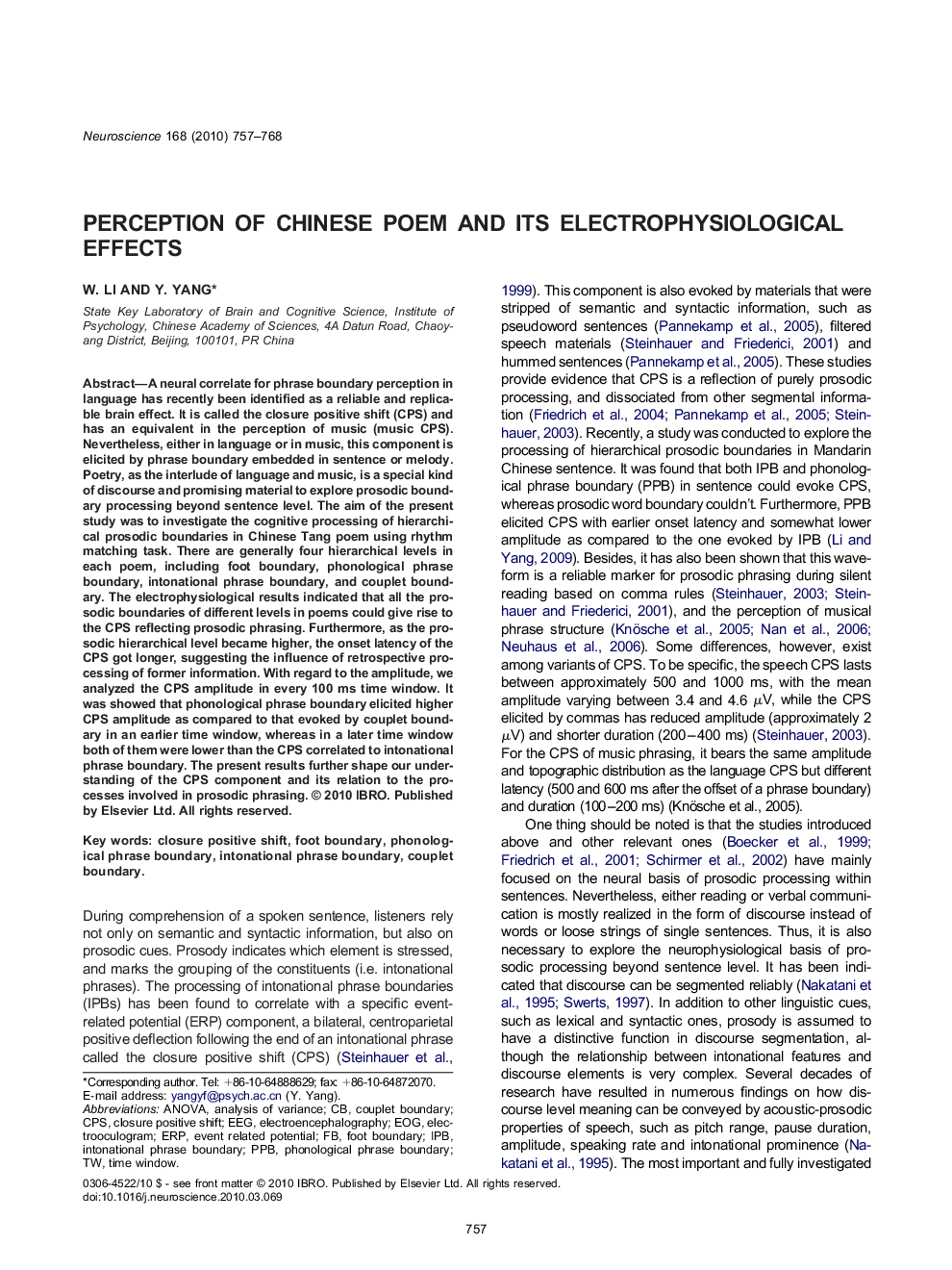| کد مقاله | کد نشریه | سال انتشار | مقاله انگلیسی | نسخه تمام متن |
|---|---|---|---|---|
| 4339493 | 1295756 | 2010 | 12 صفحه PDF | دانلود رایگان |

A neural correlate for phrase boundary perception in language has recently been identified as a reliable and replicable brain effect. It is called the closure positive shift (CPS) and has an equivalent in the perception of music (music CPS). Nevertheless, either in language or in music, this component is elicited by phrase boundary embedded in sentence or melody. Poetry, as the interlude of language and music, is a special kind of discourse and promising material to explore prosodic boundary processing beyond sentence level. The aim of the present study was to investigate the cognitive processing of hierarchical prosodic boundaries in Chinese Tang poem using rhythm matching task. There are generally four hierarchical levels in each poem, including foot boundary, phonological phrase boundary, intonational phrase boundary, and couplet boundary. The electrophysiological results indicated that all the prosodic boundaries of different levels in poems could give rise to the CPS reflecting prosodic phrasing. Furthermore, as the prosodic hierarchical level became higher, the onset latency of the CPS got longer, suggesting the influence of retrospective processing of former information. With regard to the amplitude, we analyzed the CPS amplitude in every 100 ms time window. It was showed that phonological phrase boundary elicited higher CPS amplitude as compared to that evoked by couplet boundary in an earlier time window, whereas in a later time window both of them were lower than the CPS correlated to intonational phrase boundary. The present results further shape our understanding of the CPS component and its relation to the processes involved in prosodic phrasing.
Journal: Neuroscience - Volume 168, Issue 3, 14 July 2010, Pages 757–768